Famed Green Bay Packers coach Vince Lombardi said, “Football isn’t a contact sport. Dancing is a contact sport. Football is a collision sport!” Over the last half century, thousands of players and millions of fans have witnessed exactly that.
In recent years, a disturbing number of suicides of former NFL players have opened a new discussion into the dangers of the most lucrative professional sport.
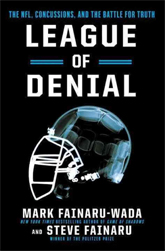 In League of Denial: The NFL, Concussions and the Battle for the Truth (Crown Archetype, 2013), Mark Fainaru-Wada and Steve Fainaru, who are brothers and investigative reporters with ESPN, explore a twenty-year span in which concussions in pro football players took on a new level of seriousness and their long-term consequences. The authors took a risk even writing this book since ESPN pays more than $1 billion per year for the broadcast rights for Monday Night Football.
In League of Denial: The NFL, Concussions and the Battle for the Truth (Crown Archetype, 2013), Mark Fainaru-Wada and Steve Fainaru, who are brothers and investigative reporters with ESPN, explore a twenty-year span in which concussions in pro football players took on a new level of seriousness and their long-term consequences. The authors took a risk even writing this book since ESPN pays more than $1 billion per year for the broadcast rights for Monday Night Football.
Since the early 1990s, the seriousness and long-term effects of concussions have been a point of contention within the NFL, the media and the medical community. Many players considered it a badge of honor to play injured. Players were constantly in fear of losing their status as starters. Medical personnel could advise players, but only head coaches could bench a player. When the press started to ask questions about this phenomenon, then-Commissioner Paul Tagliabue dismissed it as a “pack journalism issue.”
The authors begin with the death of Mike Webster, who played for the Pittsburgh Steelers. “Iron Mike,” as he was known, set a record for playing more than 600 consecutive offensive plays. Webster's former teammates realized something was amiss when he gave a rambling, incoherent speech when he was inducted into the Football Hall of Fame.
Fainaru and Fainaru-Wada chronicle Webster’s rise and fall. He escaped poverty to play football at the University of Wisconsin and then on to the NFL where he played on four Super Bowl Champion teams. He made enough money to last the rest of his life. His behavior became erratic. He lost his big house, and lived in train stations. He would forget where he was. Notes written by Webster and obtained by the authors reveal an addled mind no longer capable of linear thought.
When Webster died in 2002, he was only fifty years old. The authors explain that when Webster’s body was brought to the coroner’s office, a young Nigerian doctor name Bennett Omalu was on duty. Unlike most doctors featured in League of Denial, Omalu was not a football fan and had no loyalty to any team or the NFL.
During the autopsy, he examined Webster’s brain and was stunned by what he saw under the microscope. Omalu’s discoveries set the NFL and the scientific community on a new course of concussion investigation. Following the suicides of former players Dave Duerson and Junior Seau, medical researchers competed with each other to obtain their brains to examine them for repeated trauma.
One former player who receives little attention, but whose concussion is one of the book’s more memorable examples is former Dallas Cowboys quarterback Troy Aikman.
Aikman was accidentally kneed in the head in the 1993 NFC Championship game. He spent the night in the hospital repeatedly asking his agent why he was there and if he had played that day. Aikman went on to lead the Cowboys to a Super Bowl victory. A year later, he remembered almost none of it.
Other well known players including former Chicago Bears quarterback Jim McMahon are also reported to be suffering from short-term memory loss. Former New York Giants linebacker Harry Carson even used his Hall of Fame induction speech to call on the NFL to pay more attention to concussions.
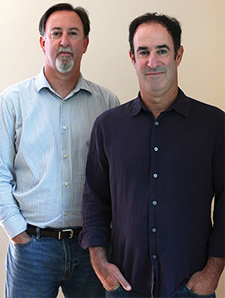 Fainaru-Wada and Fainaru |
The competiveness of these researchers, the authors show, reached the same level of intensity of the players they studied. Readers will want to read and perhaps re-read the chapters on the science of concussions carefully. The book has a list of key participants, including players, doctors, and NFL executives.
Just as tobacco executives can no longer deny the ill effects of smoking, the NFL can no longer deny the substantial risks to football players’ heads. In fact, just before the publication of League of Denial, the NFL settled a lawsuit with 18,000 players for $765 million.
The reader will have to weigh the evidence as to whether or not the NFL engaged in a Nixonian cover-up or is guilty of willful blindness, but the authors’ meticulous research presents evidence that cannot be dismissed. The evidence presented by the authors reads like cracks in the NFL’s dam -- and the league may soon be under water.
Fainaru-Wada and Fainaru have taken sports journalism to a new level by weaving vivid, heartbreaking narratives with eye-opening facts unearthed from original sources.
However, League of Denial will probably do little to affect football's popularity. Die-hard fans will be left wondering about the futures of current stars like Ben Roethlisberger and Peyton and Eli Manning.
It should be read by anyone who thinks about donning a football helmet, those who care about them and those who may have to care for them.
* * *
Kevin P. McVicker is Account Supervisor with Shirley & Banister Public Affairs in Alexandria, Va.


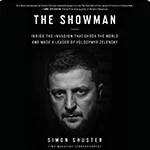 Time correspondent Simon Shuster’s “The Showman” demonstrates how Ukraine president Volodymyr Zelensky’s masterful knowledge of PR tactics and the power of propaganda transformed him from comedian into a respected world leader.
Time correspondent Simon Shuster’s “The Showman” demonstrates how Ukraine president Volodymyr Zelensky’s masterful knowledge of PR tactics and the power of propaganda transformed him from comedian into a respected world leader. Iuliia Mendel, who served as press secretary for Ukraine president Volodymyr Zelensky from 2019 to 2021, will release a book called “The Fight Of Our Lives” in September, published by Simon & Schuster’s One Signal Publishers.
Iuliia Mendel, who served as press secretary for Ukraine president Volodymyr Zelensky from 2019 to 2021, will release a book called “The Fight Of Our Lives” in September, published by Simon & Schuster’s One Signal Publishers.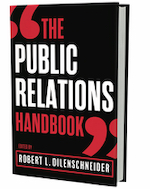 Robert Dilenschneider, former CEO of Hill and Knowlton, is releasing the fifth edition of The Public Relations Handbook on Feb. 15.
Robert Dilenschneider, former CEO of Hill and Knowlton, is releasing the fifth edition of The Public Relations Handbook on Feb. 15. 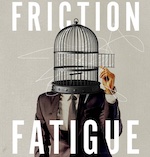 Big Advertising may be down for the count, but the power of marketing lives on. That’s the big takeaway from Paul Dyer’s “Friction Fatigue,” a look at what advertising’s downward spiral means for “future-focused brands."
Big Advertising may be down for the count, but the power of marketing lives on. That’s the big takeaway from Paul Dyer’s “Friction Fatigue,” a look at what advertising’s downward spiral means for “future-focused brands." Sabrina Horn, the high-tech PR guru who sold her Horn Group to Finn Partners in 2015, has published “Make It, Don’t Fake It.”
Sabrina Horn, the high-tech PR guru who sold her Horn Group to Finn Partners in 2015, has published “Make It, Don’t Fake It.”


 Have a comment? Send it to
Have a comment? Send it to 
No comments have been submitted for this story yet.